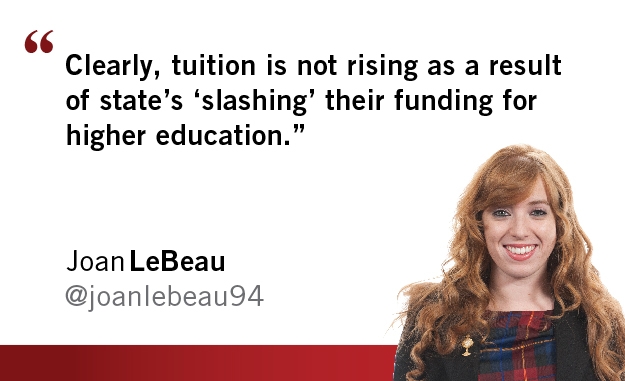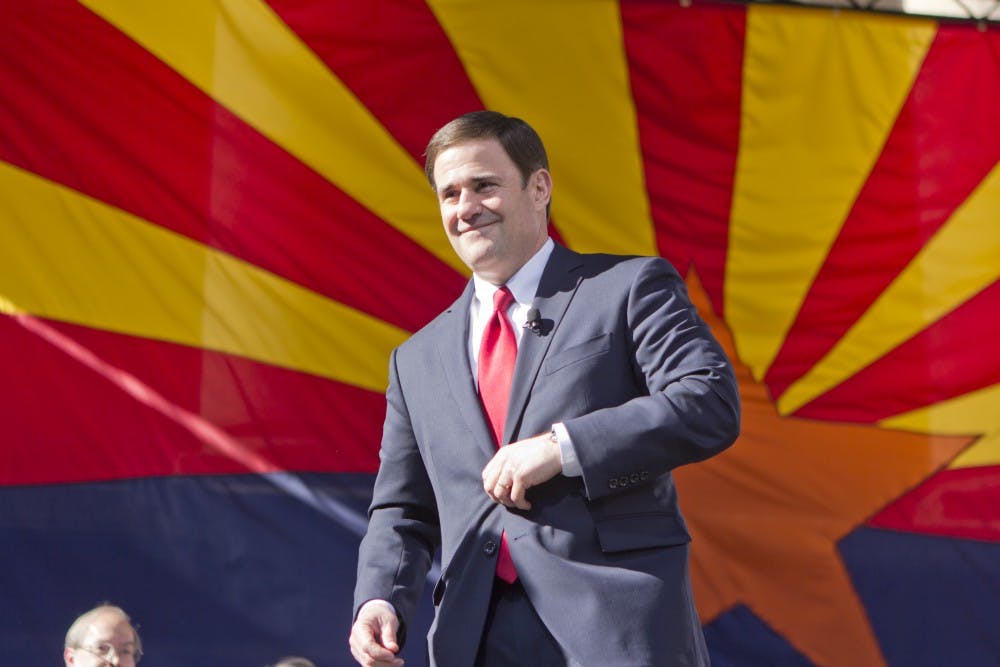I’ll never forget the process of applying to ASU. After being inaccurately declared as an out-of-state student, I experienced the misfortune of having to prove my residency to the ASU administration. That alone wouldn’t have been too bad — if there were anyone in the administration that knew how to help me. Instead, I spiraled into a three-month long process of “He’s not at his desk,” “Actually, you need to talk to her,” and “There’s a $25 fee for that.”
Anyone who has resolved an issue with our school’s administration knows how bottled-up and ineffective it is. With this fact in mind, it’s incomprehensible that it continues to grow.
In a recent op-ed in The New York Times, law professor Paul Campos explained why tuition prices have increased exponentially since the 1960s. Contrary to the narrative perpetuated by college administrators, tuition prices have not increased because of a lack of funding from the government. In fact, the amount of public money spent on higher education increased exponentially after the '60s. From 1960 to 1980, state financing of higher education grew by 390 percent and yet tuition prices still increased.

According to the Department of Education, tuition rates at an average public university increased by more than 250 percent in the last three decades. This is baffling considering that government support for higher education has skyrocketed.
Clearly, tuition is not rising as a result of state’s “slashing” their funding for higher education.
A study conducted by a professor at the California Polytechnic University, Pomona, found that the number of administrators in the California State University system grew from 3,800 to 12,183 between the years of 1975 and 2008. That’s a 221 percent increase. To make matters worse, top administrators, such as presidents, provosts and deans, are seeing a consistent rise in their salaries. It’s not uncommon to find administrators making seven figures.
President Crow, who accused Governor Ducey of putting a “low priority” on higher education rakes in a whopping $900,000 annually. Presidents of public universities make $478,896 a year on average. It is unclear why Crow needs to be paid nearly double that of what his peers are, but if he took a pay cut and dedicated that money to students, his accusations against our governor would be a little easier to stomach.
In addition to Crow’s outlandish salary, ASU has 14 vice presidents and 21 deans and provosts making six figures. Thankfully, even with the decrease in funding for higher education in recent years, top administrators are still able to increase their salaries.
On April 9, Ducey spoke to the Arizona Board of Regents addressing the financial issues higher education is facing in our state. He advised the ABOR to cut administrative costs to make college more affordable, and to use a “critical eye” when the university presidents inevitably propose raising tuition as their solutions. His advice was perceptive, and it hit the nail on the head.
Crow has proposed his plan for tuition rates next year, and it includes a 320 dollar fee for residents, a 4 percent increase for out-of-state students and an 11.6 percent increase for international students. The never-ending effort to squeeze more money out of students is truly ridiculous. In earlier years, people could count on two elements of life with absolute certainty. But today you can be certain that you will die, pay taxes and experience tuition rates rise faster than you can flip a burger patty.
Reach the columnist at Joan.Lebeau@asu.edu or follow @joanlebeau94 on Twitter
Like The State Press on Facebook and follow @statepress on Twitter.
Editor’s note: The opinions presented in this column are the author’s and do not imply any endorsement from The State Press or its editors.
Want to join the conversation? Send an email to opiniondesk.statepress@gmail.com. Keep letters under 300 words and be sure to include your university affiliation. Anonymity will not be granted.




